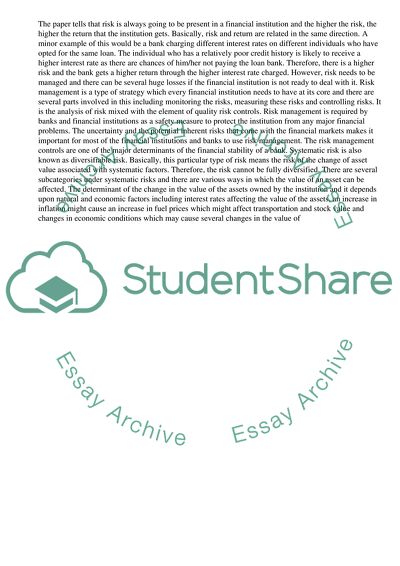Cite this document
(“The types of risks and risk management measures which are needed in a Essay - 1”, n.d.)
The types of risks and risk management measures which are needed in a Essay - 1. Retrieved from https://studentshare.org/management/1585597-management-risks-in-financial-institutions
The types of risks and risk management measures which are needed in a Essay - 1. Retrieved from https://studentshare.org/management/1585597-management-risks-in-financial-institutions
(The Types of Risks and Risk Management Measures Which Are Needed in a Essay - 1)
The Types of Risks and Risk Management Measures Which Are Needed in a Essay - 1. https://studentshare.org/management/1585597-management-risks-in-financial-institutions.
The Types of Risks and Risk Management Measures Which Are Needed in a Essay - 1. https://studentshare.org/management/1585597-management-risks-in-financial-institutions.
“The Types of Risks and Risk Management Measures Which Are Needed in a Essay - 1”, n.d. https://studentshare.org/management/1585597-management-risks-in-financial-institutions.


